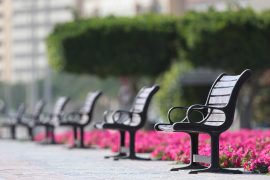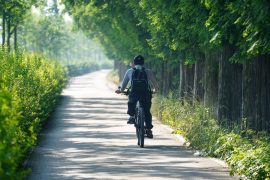Walking meeting? Lunch away from the desk? Stretch breaks?
We know from our national implementation trial that BeUpstanding works to help workers to sit less and move more (see our previous blog post to find out more). However, it is unclear just which strategies workers used to sit less and move more. We also wanted to find out how strategy usage changed following intervention, and how this related to changes in work activity and sitting. Are some strategies better than others? Our recent article from our BeUpstanding national implementation trial examined these questions.

What did we do?
In BeUpstanding, staff are asked to complete surveys before and at the end of the 8-week program. As part of these surveys, they are asked to report on their sitting and activity behaviours at work, including their percentage of worktime sitting and moving, and the percentage of work sitting that is accrued in bouts of 30 minutes or more (what we consider “prolonged sitting”).
They are also asked to report on their usage (from never to always/nearly always) of 21 sit less / move more strategies, with 13 of these strategies emphasising the ‘move more’ component. These strategies may or may not be the same ones that they decide to do together as a team as part of the BeUpstanding program. This list of 21 strategies was developed from our previous trials.
We looked at the usage of these sit less/move more strategies before and during the intervention. We also linked this usage to their sitting and activity behaviours at the end of the program as well as any changes in their behaviours. Data were used from over 1600 staff from 66 workplaces who took part in the trial.
We found BeUpstanding increased usage of sit less / move more strategies
We found that usage of sit less / move more strategies increased following BeUpstanding, with all strategies used by at least 10% of staff following the intervention. The strategies with the highest usage during the intervention (used at least sometimes by over 75% of participants) were:
- taking lunch away from the desk
- using a more distant bathroom
- listening to the body as a prompt to move
- using water as a reason to move
- wearing comfortable footwear

The strategies with the highest changes in use (all increases) were:
- standing for meetings
- using a height-adjustable desk
- stretching
- timer / computer alerts
- standing to use the phone
Strategy usage and changes in usage were associated with work activity
Strategy usage and changes in usage were associated with all the activity behaviours and behaviour changes, with no strategies counterproductive. That is, none of the strategies made staff sit more or move less. When strategies were look at individually, those showing both high usage and high effectiveness included:
- having lunch away from the desk
- using the more distant bathroom
- listening to the body

Strategies that were particularly important for moving were:
- taking the longer route places
- visiting colleagues in person
- stretching
- walking meetings
- standing for phone calls
- using timer / computer alerts.
It is important to note that these potentially highly effective moving strategies may require strong cultural support for regularly leaving the desk to move. That is why BeUpstanding is about shifting cultures, not just individuals.
What does this mean?
Collectively, these findings suggest all strategies are beneficial, and that a menu of sit less / move more strategies should be available for workers so they can choose what works best for them and their context. So – what menu options are you going to use choose to sit less and move more?
Want to read more?
Check out the full article here:
Healy, G.N., Winkler, E.A., Mulcahy, S.K. et al. Usage and effectiveness of strategies to sit less and move more: evaluation of the BeUpstanding™ national implementation trial. Int J Behav Nutr Phys Act 22, 63 (2025). https://doi.org/10.1186/s12966-025-01761-4
![]()







